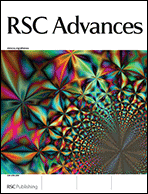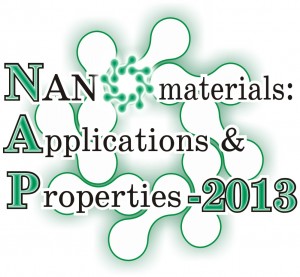The 10 most-accessed RSC Advances articles between April and June were as follows:
SBR–PVDF based binder for the application of SLMP in graphite anodes
Lei Wang, Yanbao Fu, Vincent S. Battaglia and Gao Liu
RSC Adv., 2013,3, 15022-15027
DOI: 10.1039/C3RA42773K, Paper
Iron-containing nanomaterials: synthesis, properties, and environmental applications
Boris I. Kharisov, H. V. Rasika Dias, Oxana V. Kharissova, Victor Manuel Jiménez-Pérez, Betsabee Olvera Pérez and Blanca Muñoz Flores
RSC Adv., 2012, 2, 9325-9358
DOI: 10.1039/C2RA20812A, Review Article
Graphene–inorganic nanocomposites
Song Bai and Xiaoping Shen
RSC Adv., 2012,2, 64-98
DOI: 10.1039/C1RA00260K, Review Article
Bioinspired self-cleaning surfaces with superhydrophobicity, superoleophobicity, and superhydrophilicity
Shunsuke Nishimoto and Bharat Bhushan
RSC Adv., 2013, 3, 671-690
DOI: 10.1039/C2RA21260A, Review Article
Using a two-step deposition technique to prepare perovskite (CH3NH3PbI3) for thin film solar cells based on ZrO2 and TiO2 mesostructures
Dongqin Bi, Soo-Jin Moon, Leif Häggman, Gerrit Boschloo, Lei Yang, Erik M. J. Johansson, Mohammad K. Nazeeruddin, Michael Grätzel and Anders Hagfeldt
RSC Adv., 2013,3, 18762-18766
DOI: 10.1039/C3RA43228A, Communication
Synthesis of graphene-based nanomaterials and their application in energy-related and environmental-related areas
Guixia Zhao, Tao Wen, Changlun Chen and Xiangke Wang
RSC Adv., 2012, 2, 9286-9303
DOI: 10.1039/C2RA20990J, Review Article
Visible-light plasmonic photocatalyst anchored on titanate nanotubes: a novel nanohybrid with synergistic effects of adsorption and degradation
Yuxin Tang, Zhelong Jiang, Qiuling Tay, Jiyang Deng, Yuekun Lai, Dangguo Gong, Zhili Dong and Zhong Chen
RSC Adv., 2012,2, 9406-9414
DOI: 10.1039/C2RA21300A, Paper
Electrode materials for aqueous asymmetric supercapacitors
Faxing Wang, Shiying Xiao, Yuyang Hou, Chenglin Hu, Lili Liu and Yuping Wu
RSC Adv., 2013,3, 13059-13084
DOI: 10.1039/C3RA23466E, Review Article
Graphene-based photocatalytic composites
Xiaoqiang An and Jimmy C. Yu
RSC Adv., 2011, 1, 1426-1434
DOI: 10.1039/C1RA00382H, Review Article
Biobased chitosan hybrid aerogels with superior adsorption: Role of graphene oxide in CO2 capture
Almahdi A. Alhwaige, Tarek Agag, Hatsuo Ishida and Syed Qutubuddin
RSC Adv., 2013,3, 16011-16020
DOI: 10.1039/C3RA42022A, Paper
Take a look at the articles, and then let us know your thoughts and comments below.
Fancy submitting your own work to RSC Advances? You can submit online today, or email us with your ideas and suggestions.

















![Mosquito-pupae-and-larva-underwater_shutterstock_134180213_300[1]](https://blogs.rsc.org/ra/files/2013/10/Mosquito-pupae-and-larva-underwater_shutterstock_134180213_3001.jpg)

![GA[2]](https://blogs.rsc.org/ra/files/2013/09/GA2.gif)
![GA[1]](https://blogs.rsc.org/ra/files/2013/09/GA1.gif)

